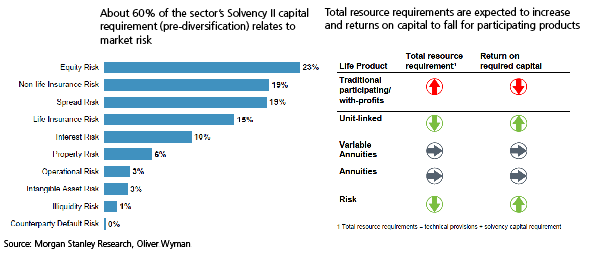REPORT PREVIOUSLY JOINTLY PUBLISHED BY OLIVER WYMAN AND MORGAN STANLEY
Solvency II will have a profound strategic impact on the insurance industry and will cause a reappraisal of traditional business models.
As the Solvency II deadline moves closer, and the framework itself becomes clearer, strategic implications for the industry come to the forefront. Solvency II will act as a catalyst for significant change with profound strategic impacts, as laid out in Oliver Wyman and Morgan Stanley’s latest research report, Solvency II Quantitative & Strategic Impact: The Tide is Going Out. The report applies the Solvency II framework to the industry overall and on individual business models.
As Solvency II exposes the industry’s economic risks, M&A opportunities will arise from the transparency of insurers’ balance sheets and the resulting identification of risky businesses from those with sustainable profit streams. Therefore, insurers’ need to shift their product mix and achieve business diversification, and balance sheet scale will drive M&A deals.

Based on the research, insurers’ management teams are likely to focus on restructuring the life insurance portfolio from a traditional model towards unit-linked and variable annuity-type products. Additionally, there will be a stronger focus on asset liability management (e.g., hedging, risk management, and reinsurance).
This report analyzes the profound strategic impact of Solvency II on the insurance industry and examines how insurers can adapt their corporate structures to benefit from Solvency Capital Requirements (SCR).





